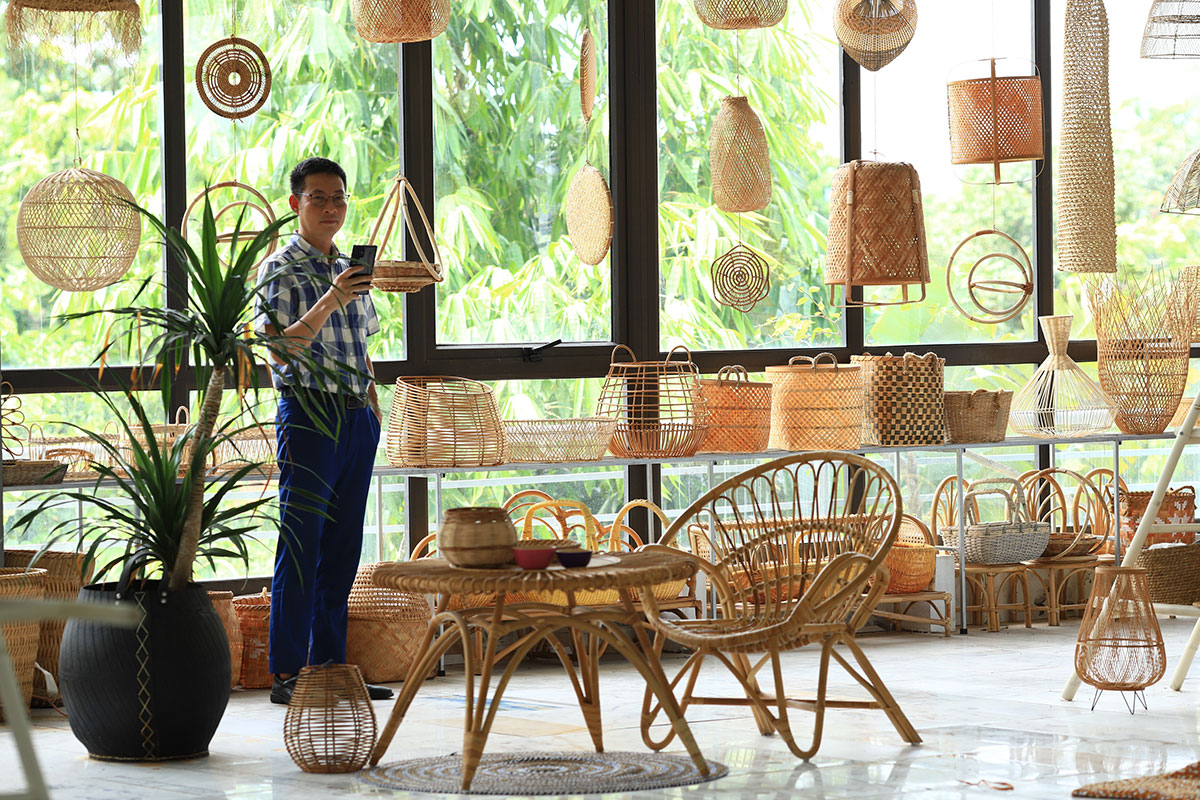News
Prospects of Vietnam’s Handicraft Industry in 2025: Opportunities, Challenges, and Development Strategies
1. Outlook for the Handicraft Industry in 2025
Vietnam’s handicraft industry continues to demonstrate significant potential in the global market. With an export turnover of $3.5 billion in 2023, the industry aims to reach $4 – 5 billion by 2025. Vietnam currently has over 5,400 traditional craft villages, supplying a wide range of products to 163 countries worldwide, with key markets including the U.S., Japan, the EU, and the Middle East. The Ambiente 2025 fair in Germany marks an important milestone, helping businesses gain deeper access to the international market.
2. Favorable Conditions for the Industry
2.1. Growing Trend of Sustainable Consumption
Vietnamese handicrafts are highly valued for their use of natural materials such as bamboo, rattan, seagrass, wood, and recycled paper. The increasing global demand for sustainable products, especially in the EU, the U.S., and Japan, presents a great opportunity for Vietnamese businesses.
2.2. Support from E-commerce
E-commerce is opening new doors for reaching international customers more easily. Vietnam ranks among the top three e-commerce markets in Southeast Asia, allowing businesses to leverage platforms like Amazon, Etsy, and Alibaba to expand their market reach.
2.3. International Trade Fairs and Government Support
Vietnam’s participation in major trade fairs such as Ambiente (Germany), Maison & Objet (France), and Tokyo International Gift Show (Japan) enhances its brand positioning. Additionally, the EVFTA agreement with the EU lowers tariffs, providing a competitive pricing advantage for Vietnamese handicraft products.
3. Challenges to Overcome
3.1. Small-Scale Production and Lack of Systematic Branding
Most craft villages operate on a household-scale model, lacking large-scale investment. Branding strategies are not systematically developed, making it difficult to compete with manufacturers from China and India.
3.2. Limited Marketing and Export Strategies
Many businesses have not fully utilized online marketing channels to promote their products. Dependence on intermediaries limits pricing control and profit margins.
3.3. Economic Fluctuations and International Compliance Requirements
Stringent international standards for quality, environmental sustainability, and labor conditions pose challenges, especially in the EU. Additionally, global economic fluctuations may affect demand for handicraft products.
4. Development Strategies for Vietnam’s Handicraft Industry
4.1. Adopting Technology and AI in Production
Applying artificial intelligence (AI) and automation will help optimize production, reduce reliance on manual labor, and enhance market trend forecasting.
4.2. Building Stronger Branding and Digital Marketing Strategies
Businesses should focus on developing professional branding, strengthening their website, social media presence, and e-commerce channels to reach global customers. Utilizing platforms like Etsy and Amazon Handmade can significantly boost online exports.
4.3. Developing a Sustainable Value Chain
Establishing a sustainable supply chain ensures compliance with international standards and enhances brand value. Collaborating with NGOs and social enterprises can create high-value sustainable products.
5. Recommendations for Small Businesses like Vietnam Handicraft
For small enterprises such as Vietnam Handicraft, a tailored approach is necessary:
- Focus on niche markets: Instead of competing with mass producers, emphasize handcrafted, unique, and eco-friendly designs.
- Utilize e-commerce effectively: Prioritize selling through platforms like Etsy, Amazon Handmade, and direct-to-consumer websites.
- Strengthen brand storytelling: Highlight the cultural heritage and sustainability aspects of products to attract conscious consumers.
- Leverage digital marketing: Use social media, influencer collaborations, and content marketing to enhance visibility.
- Join trade fairs selectively: Focus on key events like Ambiente and Maison & Objet to maximize exposure and build long-term partnerships.
6. Conclusion
2025 presents both opportunities and challenges for Vietnam’s handicraft industry. Leveraging e-commerce, technology, and sustainable supply chain development will be the key to strengthening competitiveness and achieving the $4 – 5 billion export goal. Vietnam Handicraft is committed to supporting small businesses in the industry, helping them reach global markets while preserving Vietnam’s rich cultural heritage.


